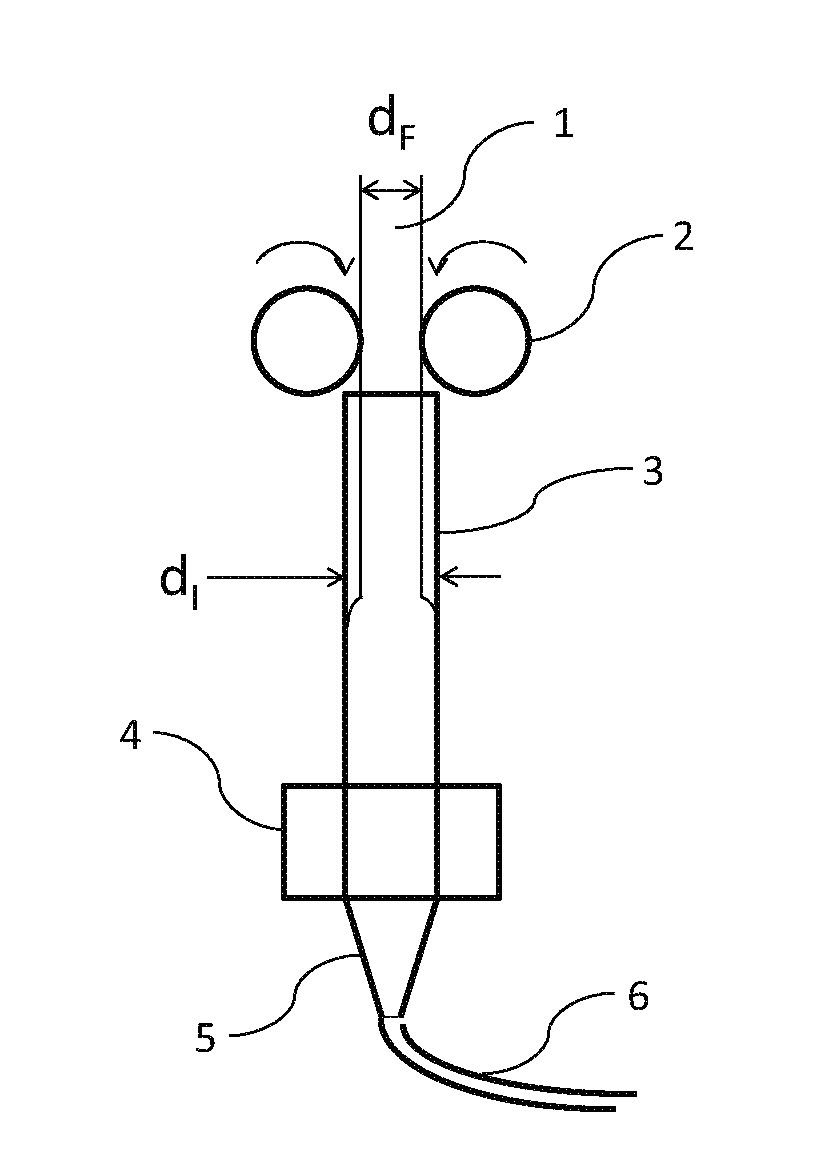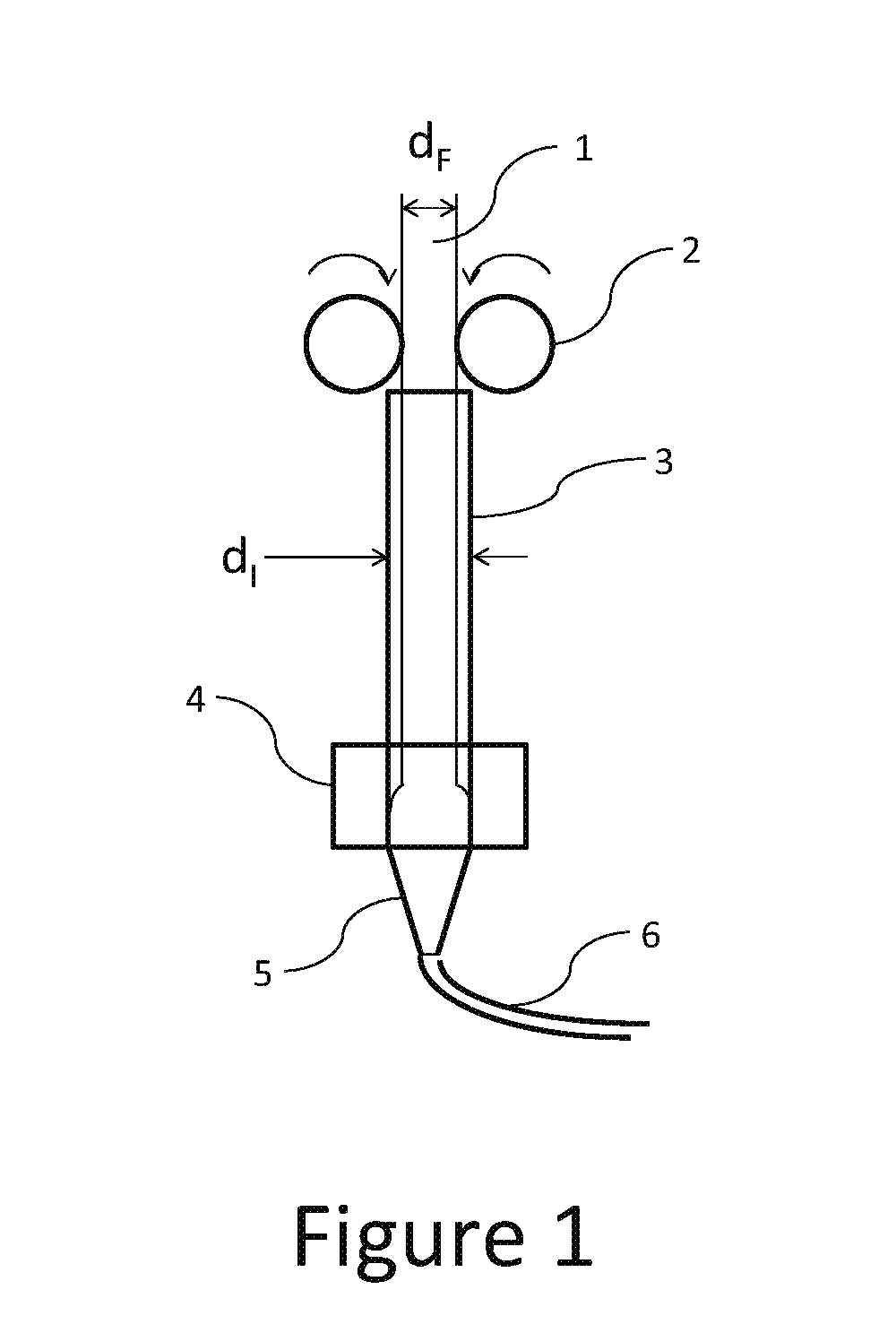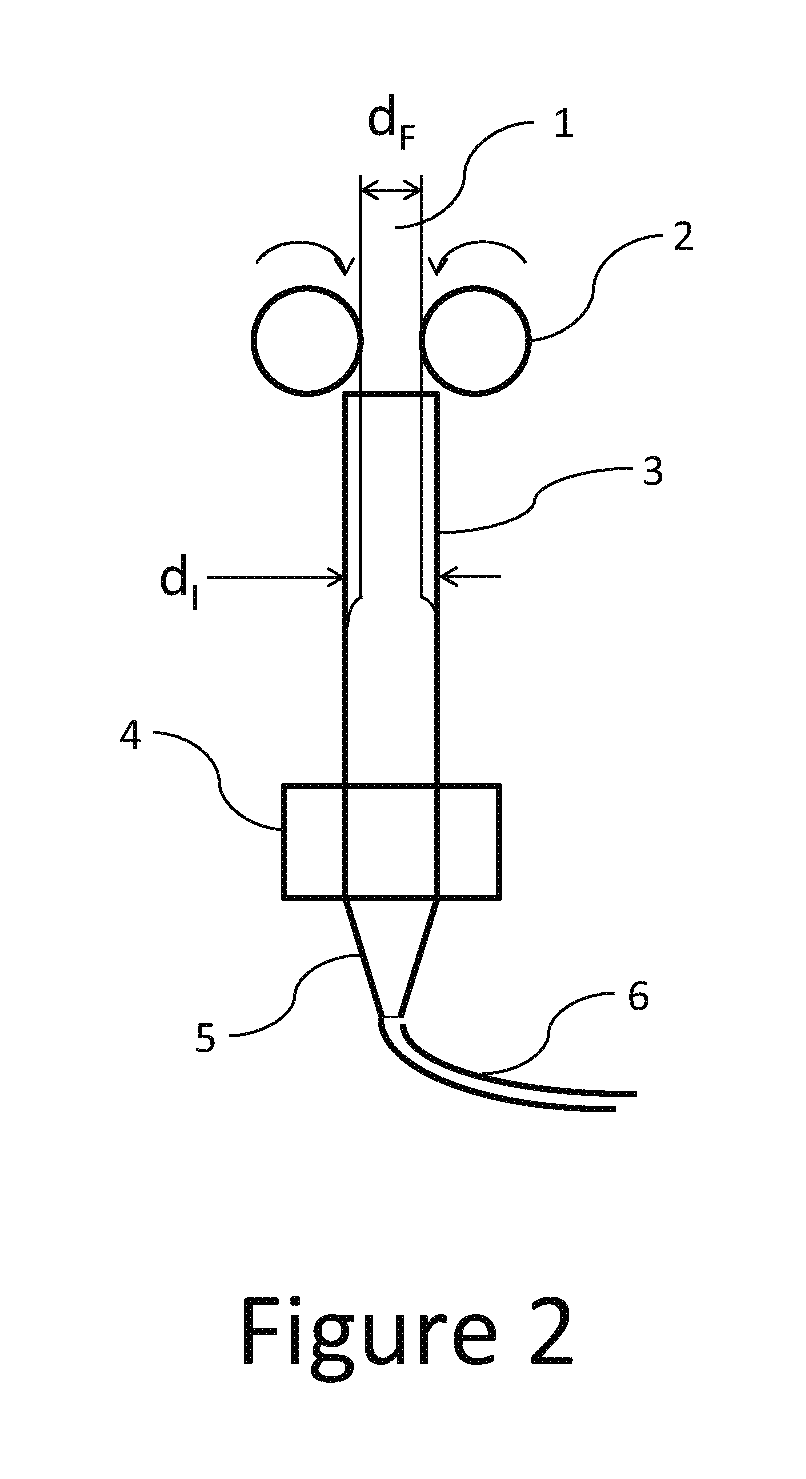High crystalline poly(lactic acid) filaments for material-extrusion based additive manufacturing
- Summary
- Abstract
- Description
- Claims
- Application Information
AI Technical Summary
Benefits of technology
Problems solved by technology
Method used
Image
Examples
example 1
[0034]PLA (grade 4043D from NatureWorks LLC) in the form of pellets was extruded using a 30 mm single-screw extruder equipped with a gear pump and a cylindrical die with a diameter of 2.25 mm to manufacture filament with a targeted diameter of 1.75 mm (draw ratio=1.286). The processing parameters are shown in Table 1. The extrudate was subsequently water-cooled, stretched by a puller to a final diameter of about 1.75 mm (continuously monitored by a dual-axis laser micrometer) and collected as a continuous filament on a large spool. The collected filament, without any post-processing, is designated as the “as-extruded filament”.
TABLE 125(com-(gear1pres-3pump6Gear(feedsion(metering4en-(gear7pumpzone)zone)zone)(flange)trance)pump)(die)(rpm)170° C.20021021020520521015
[0035]The filament on the large spool was then transferred to smaller spools. Each smaller spool contains about 750 grams of the as-extruded filament. The smaller spools loaded with as-extruded filaments were placed in a co...
example 2
[0038]The as-extruded and heat-treated filaments in Example 1 were tested on a DSC instrument (Q2000, TA Instruments). The samples were heated from 20° C. to 200° C. at a heating rate of 40° C. / min. The results are shown in FIG. 3. The dashed and solid curves are from the as-extruded filament and the heat-treated filament, respectively. Both samples show a glass transition at about 65° C. The as-extruded filament displays a peak at Tg due to physical aging. The main difference between the two filaments is in the melting behavior. The as-extruded filament shows both cold-crystallization and subsequent melting (see the inset in FIG. 3 for a magnified view of area in the dashed box). The degree of crystallinity is very low, i.e. <0.5%. Therefore the material remains almost completely amorphous. In contrast, the heat-treated filament shows no cold crystallization, indicating that the material had fully crystallized. The degree of crystallinity of the heat-treated filament is (calculated...
PUM
| Property | Measurement | Unit |
|---|---|---|
| Temperature | aaaaa | aaaaa |
| Temperature | aaaaa | aaaaa |
| Diameter | aaaaa | aaaaa |
Abstract
Description
Claims
Application Information
 Login to View More
Login to View More - R&D
- Intellectual Property
- Life Sciences
- Materials
- Tech Scout
- Unparalleled Data Quality
- Higher Quality Content
- 60% Fewer Hallucinations
Browse by: Latest US Patents, China's latest patents, Technical Efficacy Thesaurus, Application Domain, Technology Topic, Popular Technical Reports.
© 2025 PatSnap. All rights reserved.Legal|Privacy policy|Modern Slavery Act Transparency Statement|Sitemap|About US| Contact US: help@patsnap.com



